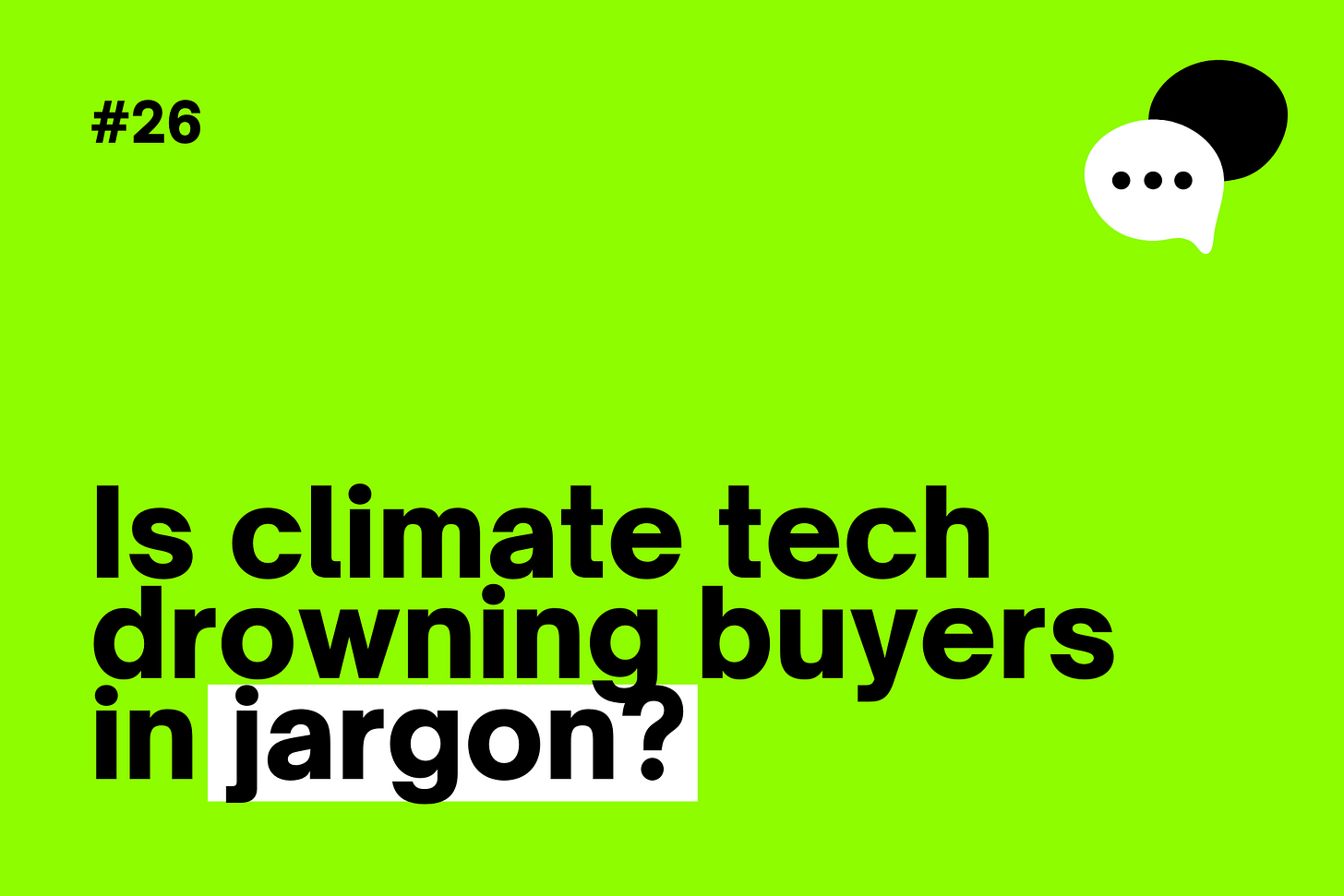Is climate tech drowning would-be buyers in jargon?
How to keep your message afloat
Hello friends,
New tech comes with new jargon — that’s a fact.
But that doesn’t mean climate tech needs to drown would-be buyers in it.
Today, we’ll talk about when and how to use jargon strategically, so you can keep your message (and your buyers) afloat.
Zoom out
Prospects want to know how your product is used in real life. What do you help customers DO that they couldn’t before? Build your messaging around that. A laundry list of technical features and capabilities isn’t what’s interesting to most people. Save it for later.
In high-level comms, focus on uncovering the transformation hidden behind the technical stuff.
Assess climate maturity
The language you use to talk about your product should match the conversation happening in your buyers’ heads. That conversation will be informed by the climate maturity of the corporation they represent.
Don’t operate on assumptions — talk to your customers. Ask about their jobs-to-be-done. Determine the gap between where they are and where they want to be. Uncover their immediate priorities and goals.
Then, reflect their language back to them in your marketing materials.
Don’t oversimplify
While you don’t want to pummel people with jargon, you shouldn’t oversimplify either. Doing so puts you at risk of repelling more sophisticated audiences. If you lean heavily on ‘carbon accounting’ in your messaging, a prospect seeking help with product lifecycle analyses could opt for a provider that uses more specific language — even if it’s something you help with, too.
Segment, survey, craft messaging for your different avatars, and test!
Map out your funnel
Strategic use of technical jargon can build trust with potential buyers. It can signal to them that they’re in the right place and that you have what they’re looking for. But it’s never going to be what draws people into the top of your funnel.
Hook people with what they really want to know: how will you make their life better, make their job easier, and improve their standing in the eyes of their peers?
Buyers need to believe that the change you’re offering them is worth the exchange (time, money, and effort) it requires. Once they believe that that’s a possibility, they might want to understand the how behind the what. This is when technical jargon can be appropriate — farther down in your marketing funnel, where prospects are aware of your solution and hungry for technical product information.
Wrapping up…
In the highly specialized industries found across climate tech verticals, technical jargon has a role to play. But what’s most interesting to buyers is the transformation that lies behind the tech.
What’s the key message you want people to take away about what your product helps them achieve? Technical jargon won’t help you here. Save it for the bottom of your funnel.
Don’t drown people in jargon when they’re just dipping their toes in the water.
Swim on, friends!




